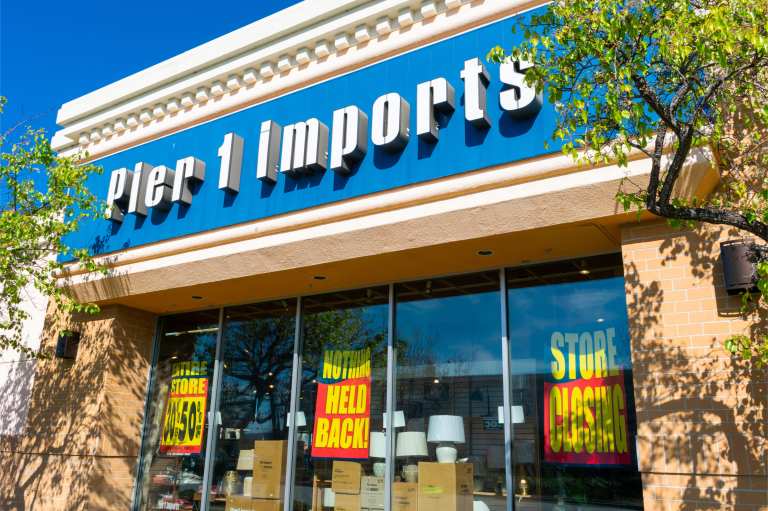
Another bankruptcy; another week of trying to sort out the problems at retail. With news that Pier 1 Imports has filed for Chapter 11 bankruptcy, a new spotlight is on an old contention: The U.S. simply has too many stores to support them all and the “retail apocalypse” is simply as natural as a snake shedding skin.
The issue was raised by Horan Capital analyst David Templeton in his Monday (Feb. 24) report on the Pier 1 bankruptcy and retail bankruptcies in general. “Non-store retailers like Amazon … certainly play a large part in the struggles facing brick and mortar retail stores,” he wrote. “However, an issue that looms just as large is the fact the U.S. simply has too much brick and mortar retail store space if a comparison to other areas of the world are any guide.”
That comparison shows that the U.S. has 23.5 square feet of retail space for every consumer. It blisters every other country on the globe, with Canada coming in second at 18.8 square feet. Even highly developed economies like the U.K. (4.6 square feet) and Germany (2.3) don’t come anywhere near the U.S. store count, even after the retail bankruptcies of the past year. It’s only natural that the most vulnerable companies are getting hit first.
All things being equal, the U.S. consumer should be spending enough to match the pre-2008 levels. Even with the constant threat of a downturn hanging over the federal deficit and overheated stock market, consumer sentiment is positive. In fact, brick-and-mortar retail sales have increased at a 3.8 percent pace, which is about average going back to the beginning of 2002. Score one for the “overstored” side. If there weren’t so many stores, the positive consumer key performance indicators (KPIs) should keep them afloat. And score one for the eCommerce factor. Faster growth in retail sales is happening online, to the tune of 8.4 percent on a year-over-year basis. According to Mastercard, online shopping over the 2019 holiday season increased 18.8 percent year over year.
Not everyone buys into the overstored theory. Real estate developer Cushman & Wakefield notes that 22 retailers filed for Chapter 11 in 2019. Most of those, however, were due to leveraged buyouts, weak performances and outdated business models. Apparel stores took one-third of 2019 closures. Shoe stores accounted for another 23 percent most of which was Payless Shoesource .
“Current trends in the marketplace reflect more of a reinvention of retail than an apocalypse. Store closures are likely to continue in 2020, but at a slower pace,” the Cushman & Wakefield report says. “Most closures will fly under the radar as retailers let their leases expire.”
Cushman & Wakefield also notes that some categories are expanding. Dollar stores, off-price apparel, beauty and cosmetics, coffee shops and food concepts grew. For 2020 the firm expects that leading retail growth categories in 2020 will be grocery chains, digital natives, experiential concepts, medical users and pop-ups (including many non-retail or non-traditional users).
“Value concepts are reaching market saturation which will impede the growth rate, but there may be opportunities for flight to quality — particularly in power centers. Fitness concepts will also experience measured growth as they face market saturation, and restaurant concepts will contend with increased labor costs, high rents and the growth of delivery demands,” the report said. “The clicks-to-bricks movement remains active and a main source of growth as consumers continue to prefer holding or seeing a product in person prior to purchasing, but most tenants in this arena are taking shop space in the 3,000-square-foot (sf) range or less.”